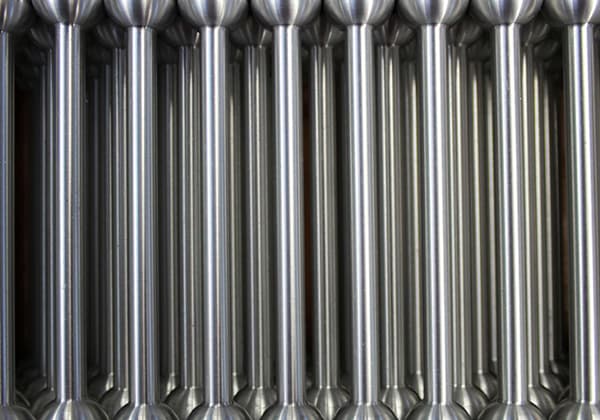
Have you ever wondered about the importance of accurate weight calculations in the world of steel manufacturing? In this blog post, we’ll explore the intricacies of square steel bar weight and its significance in various industries. As an experienced mechanical engineer, I’ll guide you through the key concepts, formulas, and potential sources of error. By the end, you’ll have a solid understanding of how to ensure precision in your square steel projects.

The weight calculation formula for square steel is: Square Steel Weight (kg) = 0.00785 * Width * Width * Length.
For instance, if there is a piece of square steel with a width of 50mm and a length of 6m, its weight can be calculated as 50 * 50 * 6 * 0.00785 = 117.75kg, based on the formula.
This table in the below shows the theoretical weight of square bars of various grades, measured in millimeters, in both kilograms per meter and pounds per foot.
The weight of a square bar is an important consideration in a variety of industries, from construction to manufacturing.
The table includes measurements for grades ranging from 5.5mm to 200mm. For example, a 5.5mm square bar has a theoretical weight of 0.237 kg/m or 0.16 lb/ft, while a 200mm square bar has a theoretical weight of 3.14 kg/m or 2.11 lb/ft.
As the grade of the square bar increases, so too does its theoretical weight. This information is crucial for professionals who need to select the right materials for their projects, and ensuring safety and efficiency.
The following table lists the theoretical weight of 5.5-200mm square bar in kg/m.
If your steel size is not in the table below, you can use our steel weight calculator to calculate online.
Table 1. Square Bar Weight Chart
| Grade (mm) | Theoretical weight (kg/m) | Theoretical weight (lb/ft) |
| 5.5 | 0.237 | 0.16 |
| 6 | 0.283 | 0.19 |
| 6.5 | 0.332 | 0.22 |
| 7 | 0.385 | 0.26 |
| 8 | 0.502 | 0.34 |
| 9 | 0.636 | 0.43 |
| 10 | 0.785 | 0.53 |
| 11 | 0.95 | 0.64 |
| 12 | 1.13 | 0.76 |
| 13 | 1.33 | 0.89 |
| 14 | 1.54 | 1.03 |
| 15 | 1.77 | 1.19 |
| 16 | 2.01 | 1.35 |
| 17 | 2.27 | 1.53 |
| 18 | 2.54 | 1.71 |
| 19 | 2.83 | 1.90 |
| 20 | 3.14 | 2.11 |
| 21 | 3.46 | 2.33 |
| 22 | 3.8 | 2.55 |
| 23 | 4.15 | 2.79 |
| 24 | 4.52 | 3.04 |
| 25 | 4.91 | 3.30 |
| 26 | 5.31 | 3.57 |
| 27 | 5.72 | 3.84 |
| 28 | 6.15 | 4.13 |
| 29 | 6.6 | 4.43 |
| 30 | 7.06 | 4.74 |
| 31 | 7.54 | 5.07 |
| 32 | 8.04 | 5.40 |
| 33 | 8.55 | 5.75 |
| 34 | 9.07 | 6.09 |
| 35 | 9.62 | 6.46 |
| 36 | 10.2 | 6.85 |
| 38 | 11.3 | 7.59 |
| 40 | 12.6 | 8.47 |
| 42 | 13.8 | 9.27 |
| 45 | 15.9 | 10.68 |
| 48 | 18.1 | 12.16 |
| 50 | 19.6 | 13.17 |
| 53 | 22 | 14.78 |
| 55 | 23.7 | 15.93 |
| 56 | 24.6 | 16.53 |
| 58 | 26.4 | 17.74 |
| 60 | 28.3 | 19.02 |
| 63 | 31.2 | 20.97 |
| 65 | 33.2 | 22.31 |
| 68 | 36.3 | 24.39 |
| 70 | 38.5 | 25.87 |
| 75 | 44.2 | 29.70 |
| 80 | 50.2 | 33.73 |
| 85 | 56.7 | 38.10 |
| 90 | 63.6 | 42.74 |
| 95 | 70.8 | 47.58 |
| 100 | 78.5 | 52.75 |
| 105 | 86.5 | 58.13 |
| 110 | 95 | 63.84 |
| 115 | 104 | 69.88 |
| 120 | 113 | 75.93 |
| 125 | 123 | 82.65 |
| 130 | 133 | 89.37 |
| 135 | 143 | 96.09 |
| 140 | 154 | 103.48 |
| 145 | 165 | 110.87 |
| 150 | 177 | 118.94 |
| 155 | 189 | 127.00 |
| 160 | 201 | 135.07 |
| 165 | 214 | 143.80 |
| 170 | 227 | 152.54 |
| 180 | 254 | 170.68 |
| 190 | 283 | 190.17 |
| 200 | 314 | 211.00 |
Choosing the appropriate calculation formula for the weight of square steel depends primarily on its actual application scenario. As a common construction material, square steel is widely used in building structures, bridges, and mechanical manufacturing. Therefore, when selecting the calculation formula, the specific needs of these fields should be considered.
For most application scenarios, such as building structures and bridge construction, the basic weight calculation formula can be used: side width (mm) × side width (mm) × length (m) × 0.00785. This formula is suitable for calculating the weight of most standard square steels and can provide an accurate basic weight estimate.
However, for some special application scenarios or specific sizes of square steel, other factors may need to be considered. For example, if the thickness of the square steel significantly affects the weight, or if there are special requirements for the size of the square steel in a specific application, you may need to adjust the calculation formula to more accurately reflect the actual situation.
Moreover, for non-standard sizes or special applications of square steel, it may be necessary to refer to specific theoretical weight tables or consult professionals for a more accurate calculation method. This is because the standard formula may not fully meet the needs of all specific situations.
When choosing the appropriate square steel weight calculation formula, the specific application scenario and size requirements of the square steel should be considered. For most conventional applications, the basic weight calculation formula is sufficient.
The common sources of error in the calculation of square steel weight include the following points:
1. Material-related errors:
Differences in the quality and properties of the steel can lead to discrepancies between the theoretical and actual weights. This is the primary factor causing the theoretical weight of steel grating to differ from the actual weight. These errors may stem from improper operation on the production line, insufficient precision of the equipment, or inconsistencies in the material handling process.
2. Uneven thickness of the galvanizing layer:
For hot-dip galvanized square steel, uneven thickness of the galvanizing layer is also an important factor causing a discrepancy between the actual and theoretical weights. If the thickness of the galvanizing layer varies significantly at different points, then the weight of this portion will also differ, thus affecting the overall weight calculation.
In general, the weight of a steel bar is an important consideration when determining its suitability for a particular application.
Knowing the theoretical weight can help engineers and fabricators determine how much material they need for a given project, as well as estimate the costs associated with purchasing and transporting the steel.








